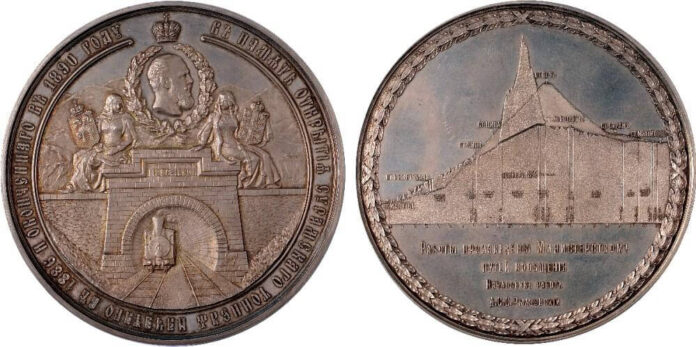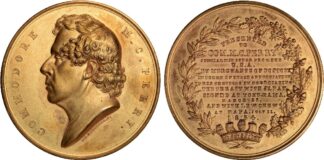A Rothschild, a Nobel and Their Story on a Medal Offered at Baldwin’s of St. James’s
Railways, their builders, their engines, bridges and tunnels were often the subject of commemorative medals throughout much of the 19th century. But every once in a while, a medal stands out for both its design and for the story behind it. One such medal, a massive 97mm in diameter, commemorates the opening of the Suram Tunnel in Georgia in 1890 and an example in silver is to be offered for sale by Baldwin’s of St. James’s on Wednesday 14th April 2021. The story behind the medal tells us how the Rothschild family (having to trade as the oil company, BNITO, since it was prohibited for Jews to buy or rent land), seized the opportunity to get cheap oil from their wells in Baku to their refinery in Fiume at a price that would compete with the American Standard Oil. An extension to the railway had been completed in 1883 and Batum on the Black Sea became the shipping port for BNITO’s oil products. But as production increased a tunnel was needed to shorten the treacherous mountain route and make it more viable. Dynamite was required and Carl Nobel (son of Ludwig), solved the problem, “Not inconsiderable quantities will be needed”.
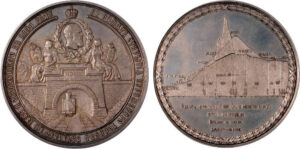
The tunnel opened in 1890 and the medal by the German born medalist Leopold Christianovich Steinman, drastically demonstrates the achievement by showing, on its reverse, the mountain dissected with the tunnel and the route of the railway with stations named. The obverse is more traditional with, below the head of the Tsar Alexander III (1881-1894), two female figures personifying Kutaisi and Tbilisi, who are seated with the shields of their provinces, to either side of the tunnel entrance – from which emerges a steam engine. The medal, says Stephen Fenton, “ticks all the boxes of collecting – it is a cracking design, it is Russian and it appeals to railway and engineering collectors. Then there is the Rothschild and Nobel interest. But most of all, it tells a story”. The medal is estimated at £5,000-7,000.
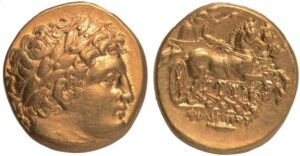
The auction also features the Portland Collection – a superb collection formed over the last 50-60 years, containing a small group of ancients including a gold stater of Philip II (lot 1), and a very good selection of Maundy sets, including some from the Bridgewater House Collection. Also featured are some rare groats and an unrivalled group of silver three penny pieces, most of which are in choice grades, including rare dates and varieties such as an 1851 with the 8 struck over 5, so that it reads 1551 (lot 117). The collection contains a quantity of three-halfpenny pieces, an interesting group of eighteenth-century tokens, and concludes with an excellent selection of British and Foreign medals.
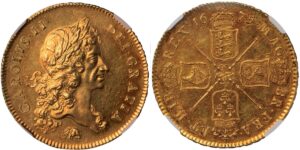
Following the Portland Collection, no fewer than four five-guinea pieces will be offered among the British coins, two of which are spectacular. The first, a 1675 elephant mintmark example (lot 351), is certified and graded by NGC as Mint State 62+, making it the highest graded example, and it is a variety not seen in the Schneider Collection.
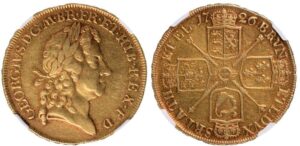
The other, a 1748 example (lot 353), is certified and graded by NGC as Mint State 64, thus making it too the highest graded example. There is a large group of Islamic coins, followed by the World coin section which includes a selection of Indian mohurs. The sale concludes with a USA George Washington medal struck in silver.
The online catalogue is available at Sixbid.
You may also view all coins of the sale in the PDF auction catalogue.



